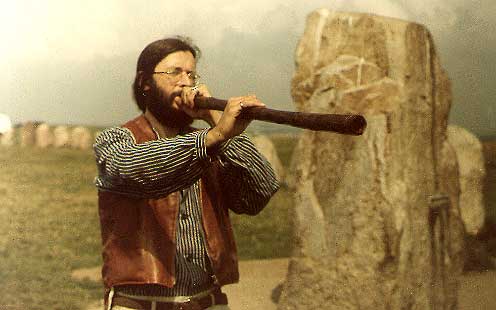Music and instruments
[Excerpt from longer text in Swedish]
The concepts music and musical instruments in older times
The word music does not exist in old Swedish vocabulary; it speaks of dance, poems, games and play. "Musica" did not arrive until the middle ages and was a concept reserved for the learned. When these mention the wild song and play of the Nordic people, they are less pleasant opinions. What they heard were "noises" that stood outside the values and control of the Church. Such should thus be "ignored or opposed". The word music does not occur in Swedish writing until the 16th century. Below I will, for simplicity, use the word music as designation for the sound making of our ancestors even in ancient times.
Musical instruments are a kind of sound tools. Sound tools are used to make sound. You can specially construct instruments like a flute, but it is no condition. Objects become instruments because they are used for that purpose, like drumming on an upside down cooking pot.

Copy of the Osberga horn from 834 AD, demonstrated by Ă…ke Egevad.
Ancient life - humans in nature
For modern western people music is often a source of amusement and invigoration of tired nerves. During ancient times however the music was part of rituals, work, gatherings, dance and meals in the form of signals and ceremonial music.
The stuggle for existence has always been part of human history. A means in that struggle is music. You sing during work, and hunters can lure prey by imitating sounds. You communicate with with tamed animals and each other, the latter often over long distances.
Musical interpretations can be made using archaeological finds, rune carvings, texts, interpreted images, studies of older folk song- and instrumental traditions and much more. Everyone are free to make their own reconstructions. It is important that these creations are classified as reconstructions, not "authentic" music.
Too many reconstuctions sadly lack ties to the time. An example of this is "Viking music on bronze age horn" that can be heard on the Internet. Unfortunately the broze age horns were long since buried during the Viking age and not dug up until far later! Another example is the use of medieval ballads - essentially all melodies of the medieval ballads were written during the 18th and 19th century and have likely undergone changes along the way. However, with the (great) lack of material they can still be valuable.















